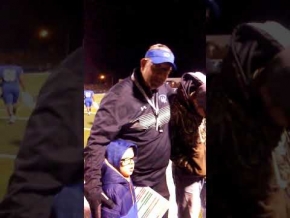“You can’t hide your lyin’ eyes…”

Boomer Musings
By J. Leslie Riseden
The Eagles told us this in the seventies, and it’s true. With the enormous decision facing voters next week, I decided to devote this week’s column to the art of detecting untruthfulness. In the excerpts below, the authors reveal some of what they consider telltale signs of lying. Certainly, there are no hard and fast rules for every situation, these may be of interest -- especially when applied to the candidates in this year’s presidential race.
In one deception-detecting book, “Spy the Lie: Former CIA Officers Teach You How to Detect Deception” by Philip Houston, Michael Floyd, Susan Carnicero, and Don Tennant, here are some tips these experts offer for spotting untruthful answers:
Verbal/non-verbal disconnect -- when a person’s words don’t match their body language. A common example is when a person nods affirmatively while responding in the negative, or turns his head from side to side while answering in the positive.
Covering eyes or mouth: If a person’s hand goes in front of her mouth while she’s responding to a question, that’s significant. Similarly, if a person shields or closes her eyes while responding to a question that doesn’t require reflection to answer, that’s a likely deceptive indicator.
Throat-clearing or swallowing: When a person clears his throat or performs a significant swallow prior to answering the question, that’s a potential problem. Metaphorically, he might be “dressing up the lie before presenting it,“ or the question might have created anxiety, causing discomfort or dryness in the mouth and throat.
Hand-to-face activity: Let’s say you’ve asked a question that creates anxiety because the truth would be incriminating. That, in turn, causes the nervous system to drain blood from the surfaces of the face, the ears, and the extremities— which can make a person cold or itchy. Without even realizing it, his hands are drawn to those areas.
Grooming gestures: A deceptive man might adjust his tie, shirt cuffs or maybe his glasses. An untruthful woman might move a few strands of hair, or straighten her collar or skirt. Tidying up the surroundings is another “tell,“ e.g., suddenly the phone isn’t turned the right way, the glass of water is too close, or the pencil isn’t in the right place.
Dr. Lillian Glass, a behavioral analyst and body language expert, says when trying to figure out if someone is lying, “you first need to understand how the person normally acts. Then you’ll want to pay careful attention to their facial expressions, body language and speech patterns.” Her book, “The Body Language of Liars,“ offers these additional tips:
When a person repeats words or phrases, they’re trying to convince you, and themselves, of something, says Glass. “They’re trying to validate the lie in their mind” or maybe buy themselves time as they attempt to gather their thoughts.
When someone goes on and on and provides information that is not requested or an excess of details, “there is a very high probability that he or she is not telling you the truth,“ writes Glass. “Liars often talk a lot because they are hoping that, with all their talking and seeming openness, others will believe them.”
Finally, Glass says, look for pointing. When a liar is put on the defensive, “he will get hostile because he is angry that you’ve discovered his lies, which may result in a lot of pointing.”
It must be said, I suppose, that it’s a said state of affairs that many of us may find ourselves voting for the candidate( s) whom we least suspect of lying. Whatever way you’re leaning, the worst thing you can do is forfeit that right. Vote!
- Log in to post comments








